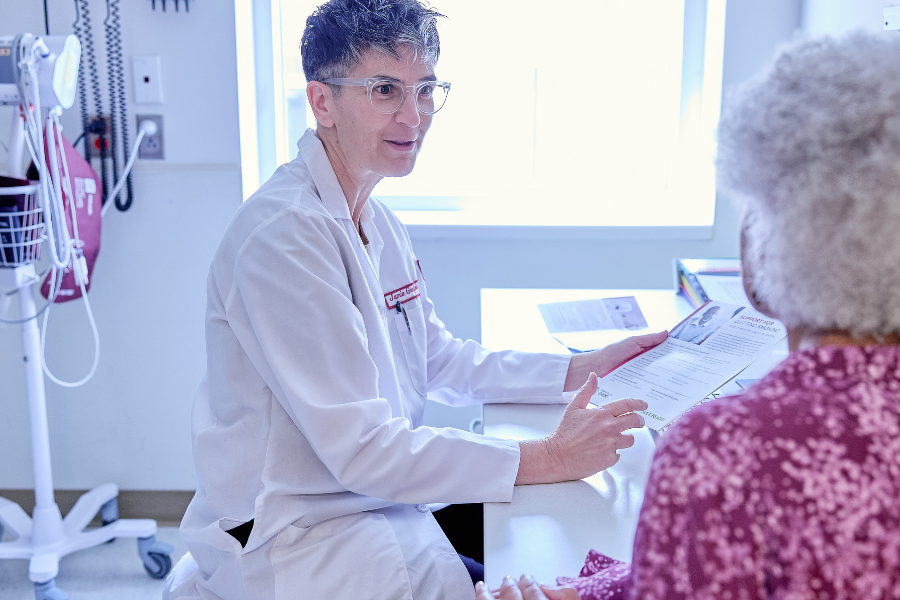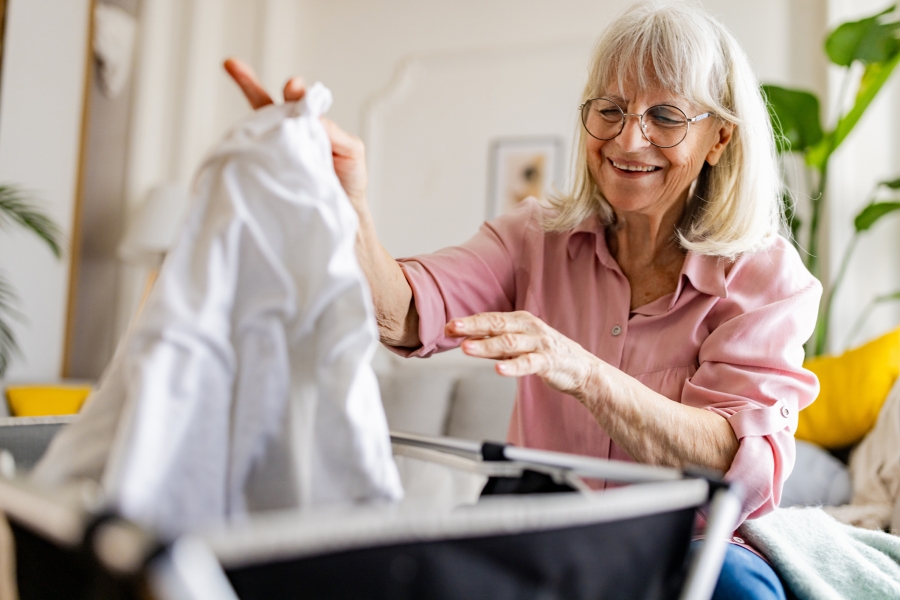James J. was used to an active life before he retired. In addition to his job as a corrections officer in Mount Union, Pennsylvania, he also used to build farm equipment.
But several years into his retirement, James started to get winded when he’d do things like walk briskly or climb stairs.
“I was short of breath,” he recalls. “I’d go down to the basement in our home to put wood in the stove and, coming back up, I’d have to stop and sit down on the steps.”
In 2015, his local doctor diagnosed him with emphysema, a type of chronic obstructive pulmonary disease (COPD).
COPD is a progressive lung disease that makes it hard to breathe. Smoking is the leading cause, and James had smoked for 42 years before quitting in 1992. He began taking medications and attending pulmonary rehabilitation after his diagnosis. He also quit using his wood stove because smoke from stoves and fireplaces can make COPD symptoms worse.
Despite taking these steps to manage his COPD, James continued to struggle with breathlessness that made it hard to do things like shower and dress. He used supplemental oxygen part of the time to help him breathe better. James, who played softball well into his 50s, now couldn’t even mow his lawn.
“It took me an hour and a half to do things I used to do in 20 minutes,” he says.
Finding relief at Temple
Since James’s breathing was getting worse, his doctor told him about a new treatment option: bronchoscopic lung volume reduction (BLVR), a nonsurgical procedure in which doctors place tiny valves in the airways of the lungs to help people with severe emphysema breathe better. These one-way valves block off diseased parts of the lungs so that healthier regions can expand more fully and function better.
Through her research, James’s daughter, Bridget, learned that BLVR and other innovative treatment options for lung disease are offered at Temple Health. She helped her dad schedule an appointment with pulmonologist Gerard J. Criner, MD, FACP, FACCP, director of the Temple Lung Center.
“My kids have been an inspiration,” James says. “They push me a little, but I don’t mind.”
Dr. Criner is a world-renowned physician and has led the research around BLVR. His expertise in patient anatomy helps him and his patients make the best decisions for their health. James underwent this nonsurgical procedure, and was helped by it, but sometimes still found himself short of breath.
“Dr. Criner said there’s one other option for my condition, which he and I had discussed before they put the valves in,” James says.
That option was lung volume reduction surgery, or LVRS.
James met with thoracic surgeon Charles T. Bakhos, MD, MBA, MS, FACS, to discuss the possibility of having the surgery. James had several tests to determine if he was a candidate for LVRS. Despite being 84 years old at the time, James was healthy enough for the operation, according to Dr. Bakhos.
LVRS is similar to BLVR in that it reduces lung volume to allow remaining lung tissue to function more efficiently. But instead of implanting valves, the surgery removes 20% to 35% of damaged lung tissue. Temple has one of the most experienced LVRS programs in the nation.
In February 2022, James underwent bilateral thoracoscopic LVRS at Temple. Dr. Bakhos removed approximately 25% of each of James’s lungs through three incisions in either side of his chest. “They’re not very big at all — the largest incision is about an inch and a half,” James says.
Six days after his surgery, James went home to continue his recovery.
Feeling good enough to dance
James is breathing much better now. He can do many activities with greater ease, and he doesn’t need oxygen therapy anymore.
“The surgery has made all the difference in the world,” he says. “It took me completely off oxygen. I only have one inhaler, and my breathing is great.”
LVRS isn’t a cure for COPD, but it may improve breathing, exercise ability, and quality of life. James can now walk a couple of blocks and climb the steps to his church without stopping to catch his breath. Shopping is easier, too, now that he no longer has to lean on a cart for support.
“Before the surgery, I couldn’t do anything — nothing,” James says. “Now, taking a shower is no bother. Changing my clothes is no bother. Everything is 100% better. I thank God for his mercy. I just feel great.”
James says his experience as a patient at Temple was wonderful. Drs. Criner and Bakhos carefully explained his treatment options, and his nurses provided great care. “They were wonderful and professional,” James says. “They treated me good.”
Recently, James shared a video with Dr. Bakhos that might be viewed as a sign of how far he’s come since undergoing surgery for his advanced emphysema. It was a clip of James dancing with his daughter at his grandson’s wedding.
“Dr. Bakhos told me, ‘Just keep it up,’” James says. He intends to do just that.
Helpful Resources
Looking for more information?

